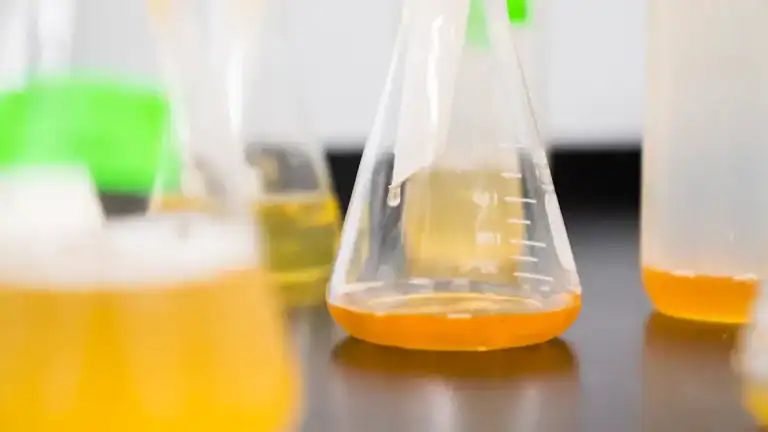You may have seen “microcrystalline cellulose” on food or supplement labels and questioned whether it’s something to avoid. This common additive, made from plant fibers, helps thicken products or keep pills from crumbling—but does it affect your health? While experts generally consider it safe, some people report mild digestive issues when consuming large quantities. The truth isn’t black and white, so let’s examine what you need to know before determining if it fits your diet.
What Is Microcrystalline Cellulose?
Microcrystalline cellulose could sound like something from a science lab, but it’s actually a common ingredient you’ve likely consumed without realizing. It’s made from plant-based cellulose composition, broken down into tiny particles with a unique cellulose crystalline structure.
Contemplate it like wood pulp—but purified and safe for food. The process removes impurities, leaving behind a fine, white powder that doesn’t dissolve in water. You won’t taste it, but it’s often used to improve texture or prevent clumping.
Since it’s derived from plants, it’s technically a fiber, though your body can’t digest it like other dietary fibers. Don’t worry—it passes through your system without causing harm. It’s non-toxic, and regulators consider it safe for consumption.
Common Uses in Food and Supplements
You’ll find microcrystalline cellulose in more foods and supplements than you could expect—it’s a behind-the-scenes player that keeps things smooth, stable, and easy to use. It’s often added to dietary sources like protein powders, fiber supplements, and low-calorie foods to improve texture without extra calories.
Processing methods disintegrate plant fibers into tiny particles, making it blend seamlessly into products. You may spot it in shredded cheese (to prevent clumping), baked goods (for moisture control), or even pill capsules (to help them hold shape). Since it doesn’t dissolve, it bulks up foods while staying neutral in taste.
Consider it as a silent helper—keeping your supplements from crumbling or your sauces from separating.
Potential Health Benefits and Drawbacks
Some additives in food and supplements spark debate, but microcrystalline cellulose generally gets a pass for being safe—though it’s not without quirks. In the event that you notice it helps with texture in low-fat foods, it doesn’t offer nutritional value. On the contrary, some report digestive discomfort like bloating, especially in large amounts. Research hasn’t linked it to serious cardiovascular impacts, but should you be sensitive, it’s worth watching.
| Pros | Cons |
|---|---|
| Helps food texture | No nutritional benefits |
| Generally safe | Can cause bloating |
| Low-calorie filler | Rare sensitivity issues |
Should you be unsure how your body handles it, start small and see how you feel. Most people tolerate it just fine, but listen to your gut—literally.
Safety Regulations and Expert Opinions
Since regulatory agencies have thoroughly reviewed microcrystalline cellulose, they’ve consistently labeled it safe for consumption in typical amounts. You’ll find it’s approved by the FDA, EFSA, and other global bodies, thanks to strict regulatory oversight.
Experts agree it’s non-toxic and passes through your system undigested, posing no harm whenever used as intended.
- FDA Approval: Recognized as GRAS (Generally Recognized As Safe) for decades.
- Dose Matters: Safe in foods, supplements, and medications at standard levels.
- No Hidden Dangers: Studies show no link to long-term health issues when consumed responsibly.
- Consumer Awareness: Labels clearly list it, so you can make informed choices.
While some worry about additives, rest assured—microcrystalline cellulose meets rigorous safety standards. Always check labels when you have concerns, but experts confirm it’s harmless in everyday products.
Alternatives to Microcrystalline Cellulose
While microcrystalline cellulose is widely considered safe, one may still prefer alternatives—whether due to dietary restrictions, personal preference, or curiosity about other options.
Natural fiber sources like psyllium husk, oat fiber, or apple pectin work well as cellulose replacements, offering similar texture and health benefits. Should you be gluten-free, tapioca starch or rice bran can be great choices.
For baking, guar gum or xanthan gum help bind ingredients without changing flavor. Powdered cellulose, derived from plants, is another close substitute but might feel gentler on digestion.
Always check labels, as some alternatives could trigger sensitivities. Experiment with small amounts to see what suits your body best. By exploring these options, you can tailor your diet to fit your needs while keeping foods functional and enjoyable.
Conclusion
So, is microcrystalline cellulose bad for you? Probably not—unless you’re eating spoonfuls of it. Most of us consume tiny amounts without issue, and the FDA says it’s safe. But should you’ve ever felt bloated after a fiber-packed snack, now you know why. Listen to your body, check labels, and whenever in doubt, swap it out. Funny how something so harmless can still stir up debate, right?



